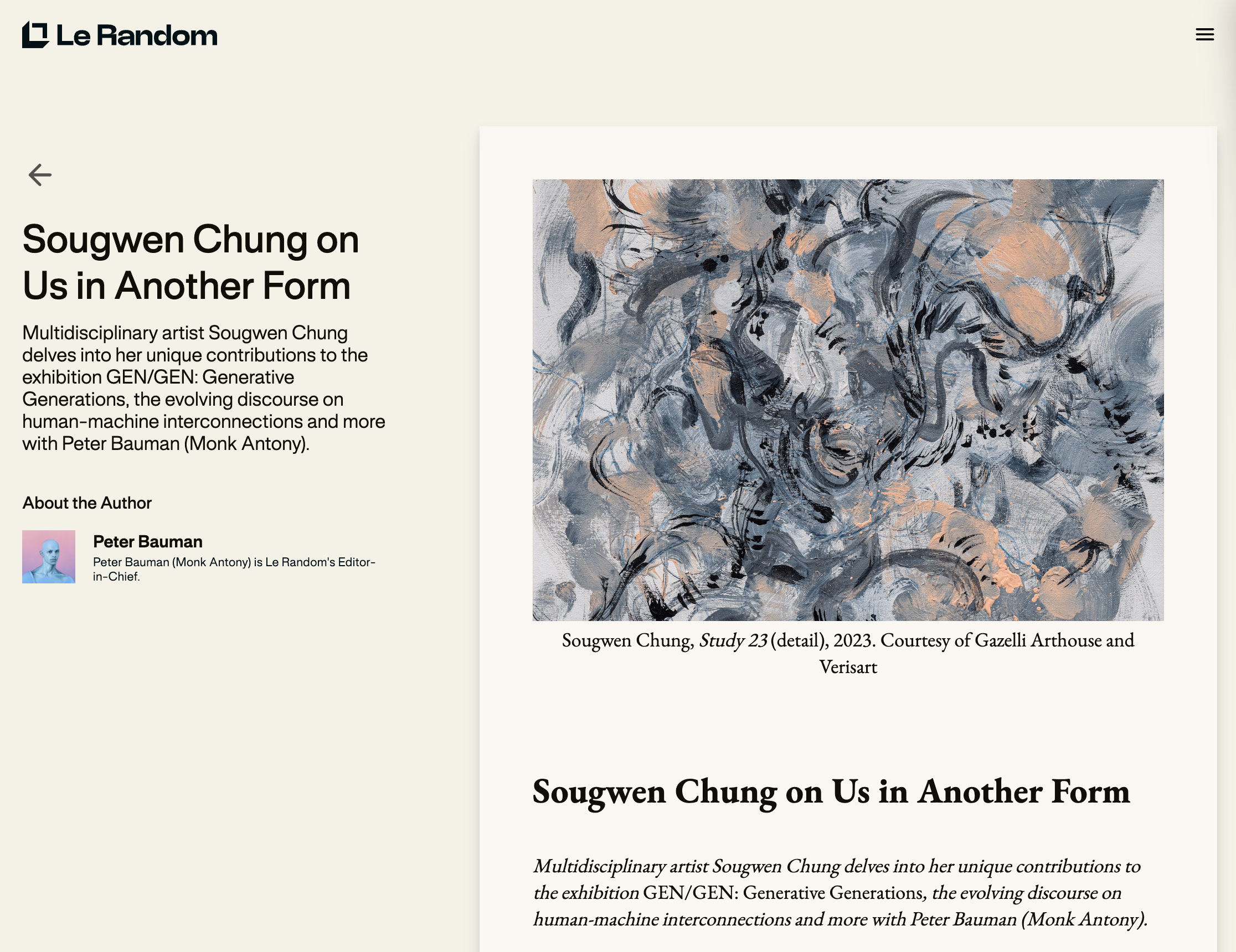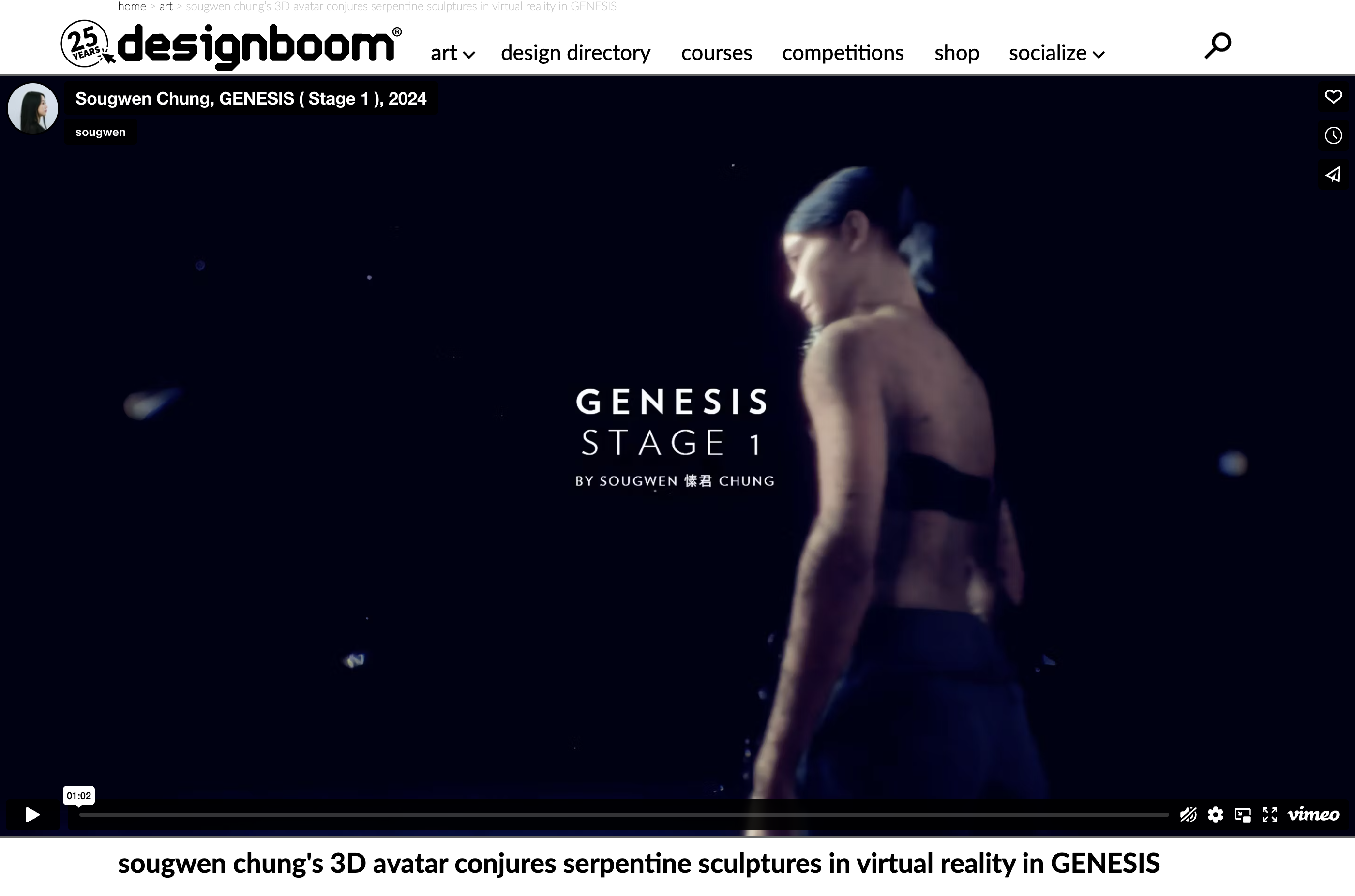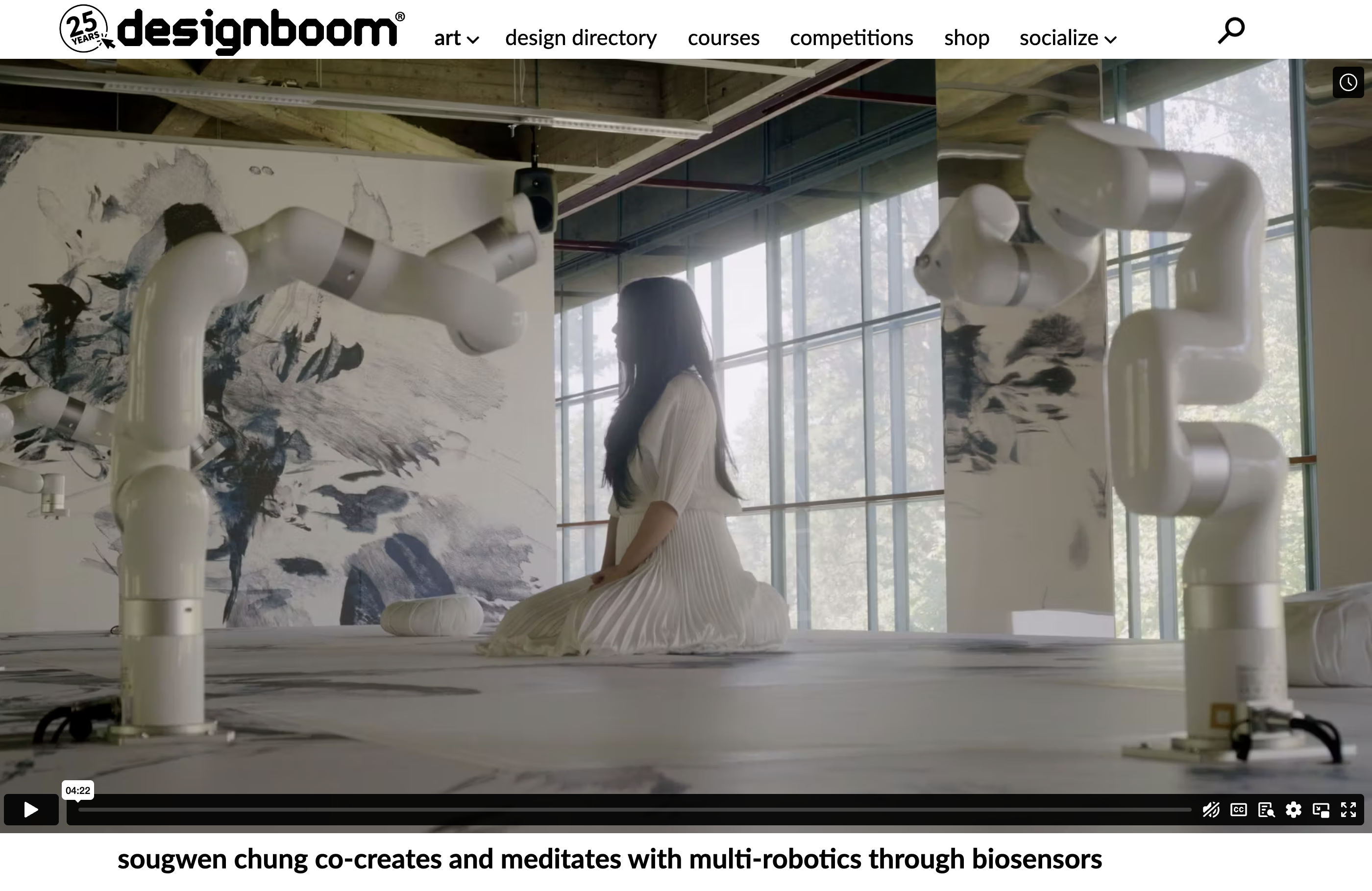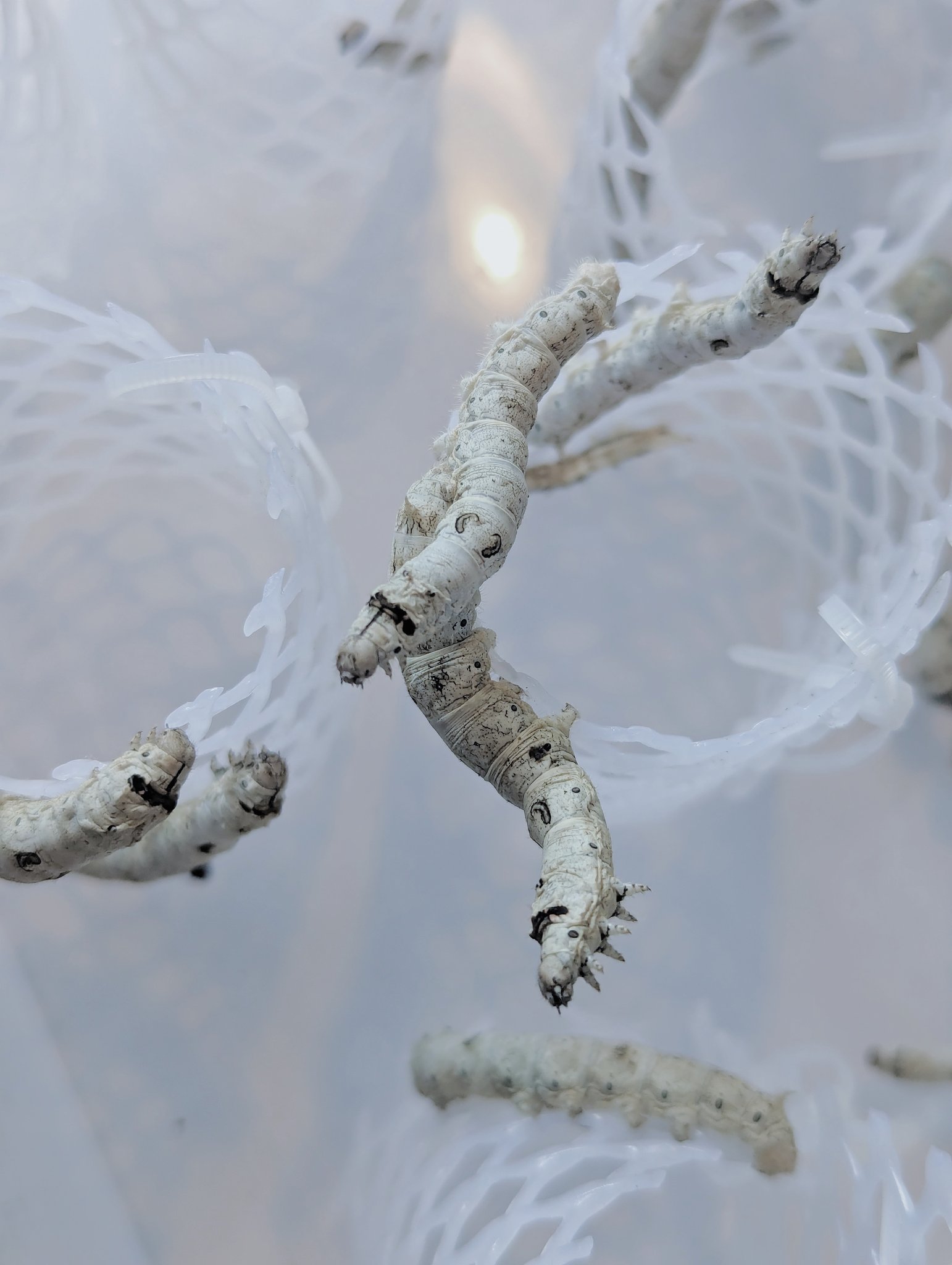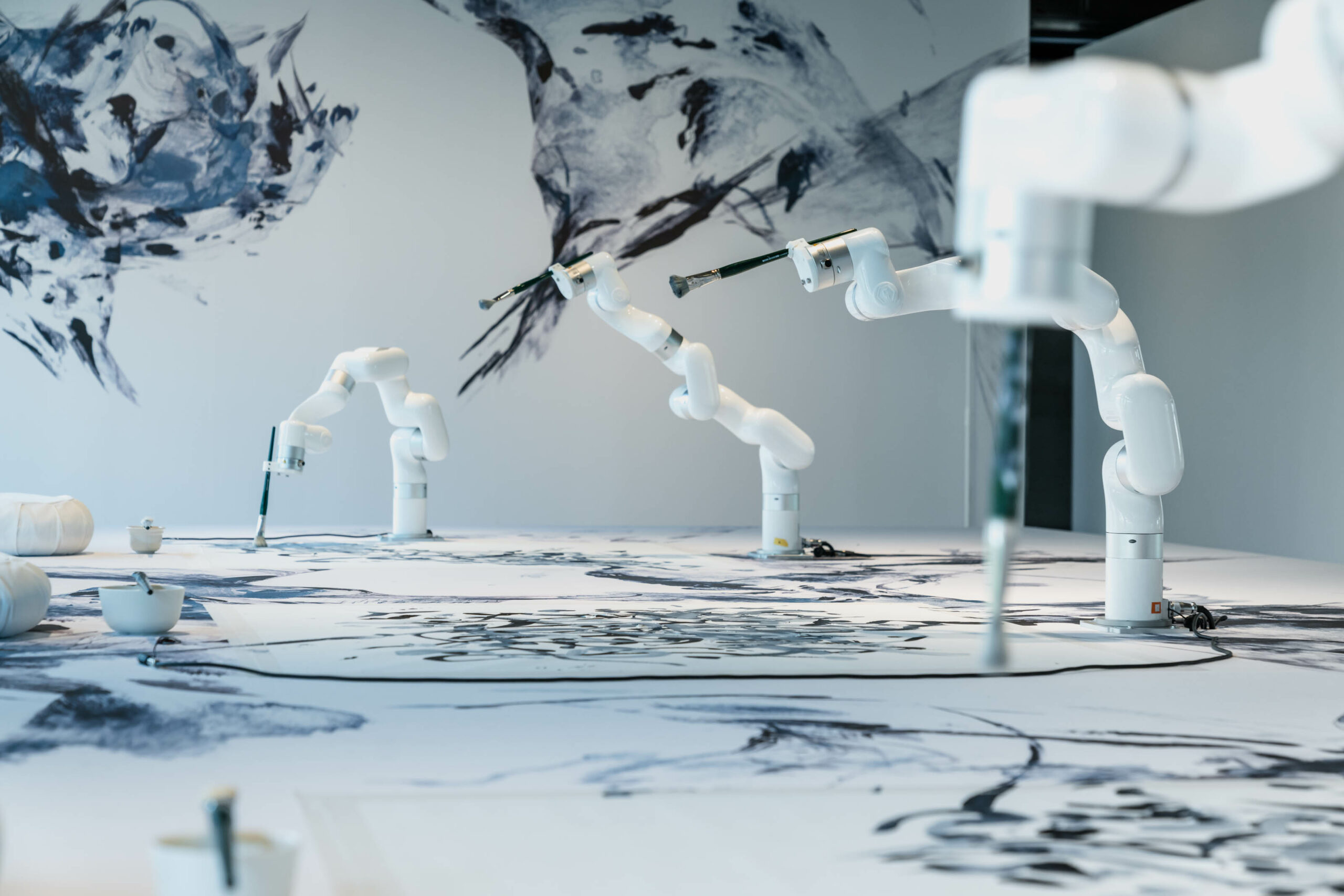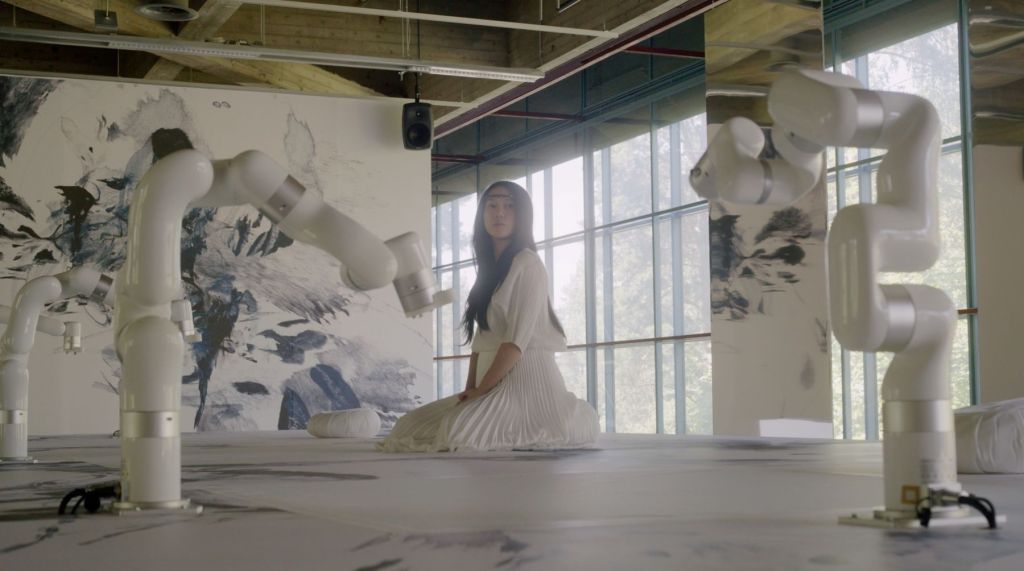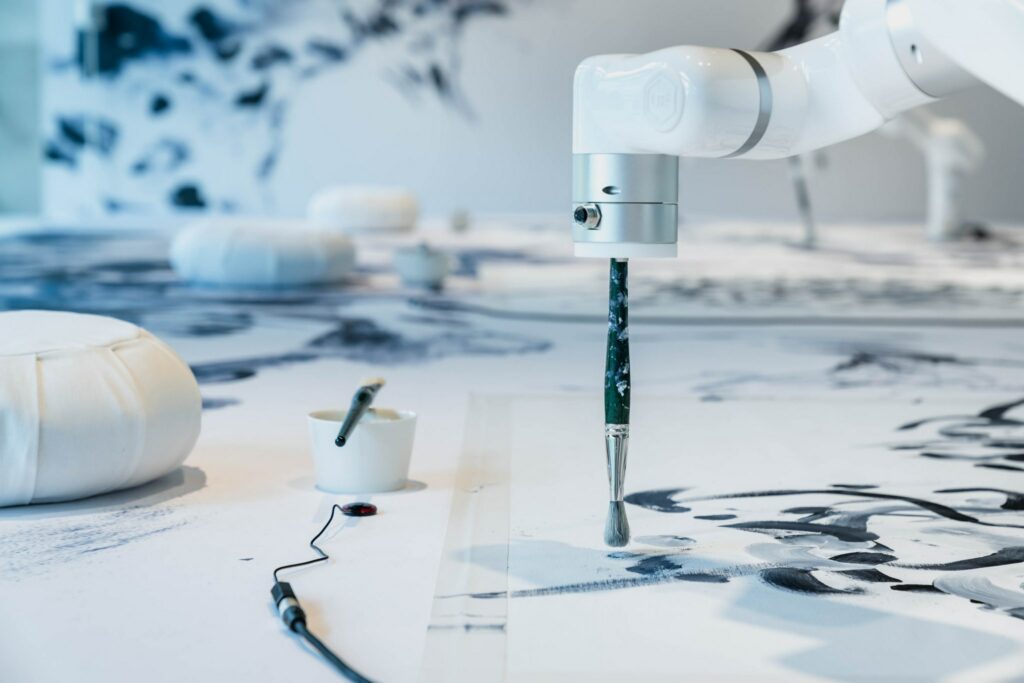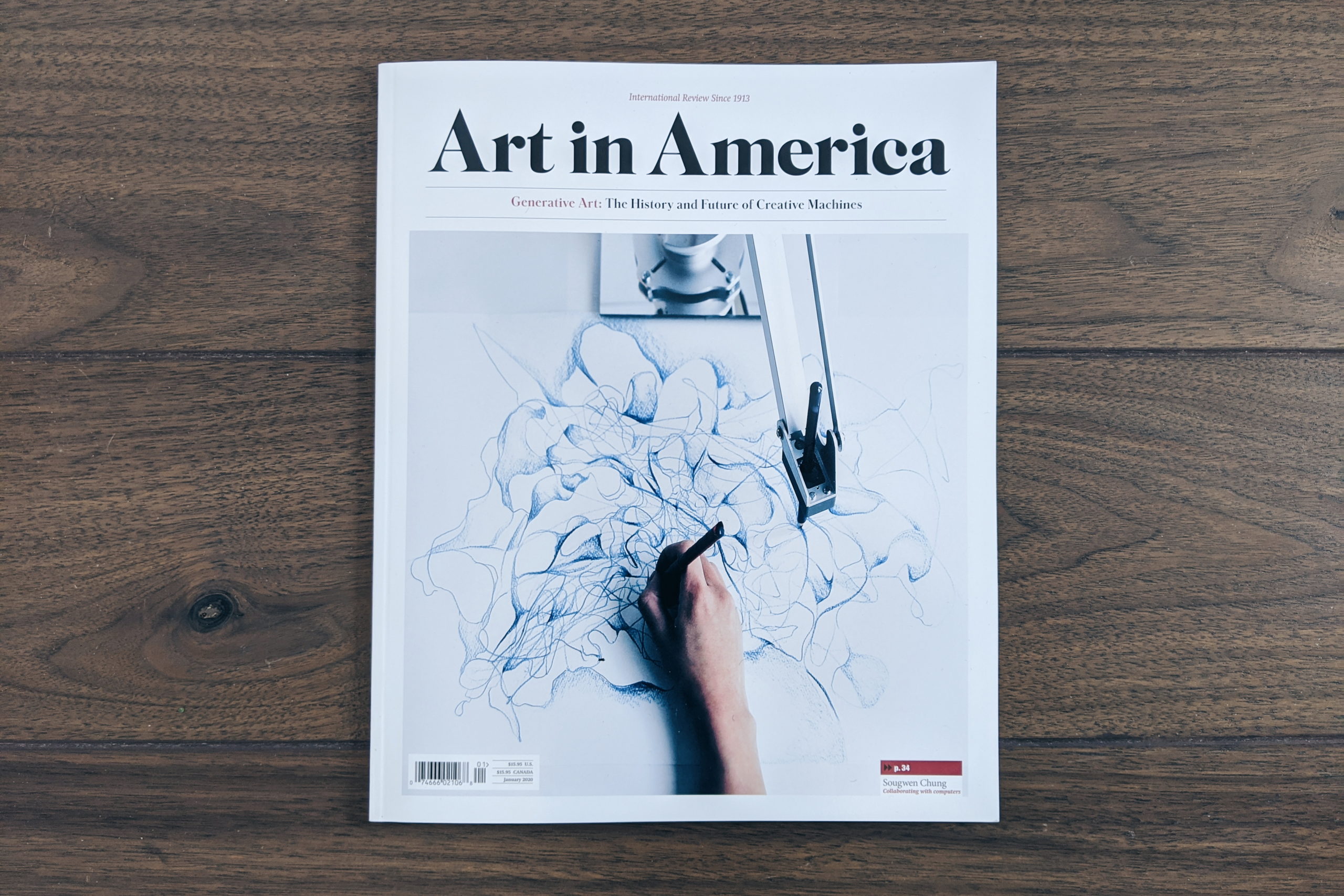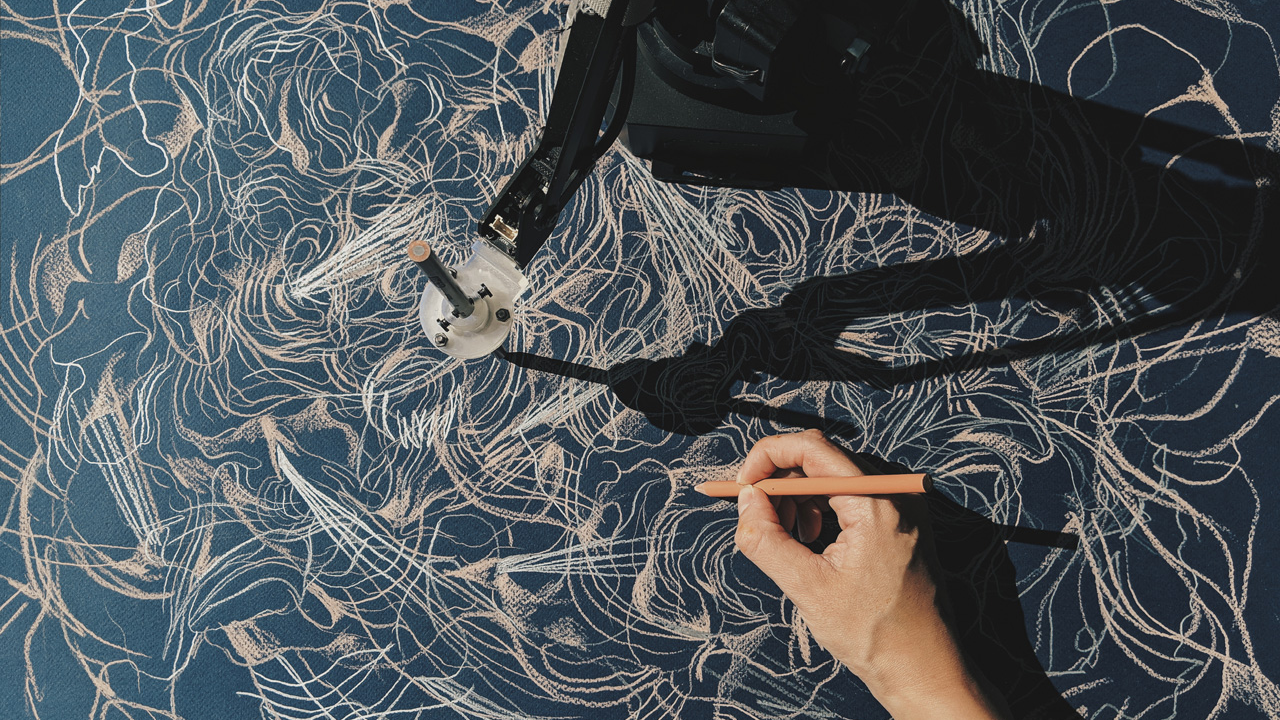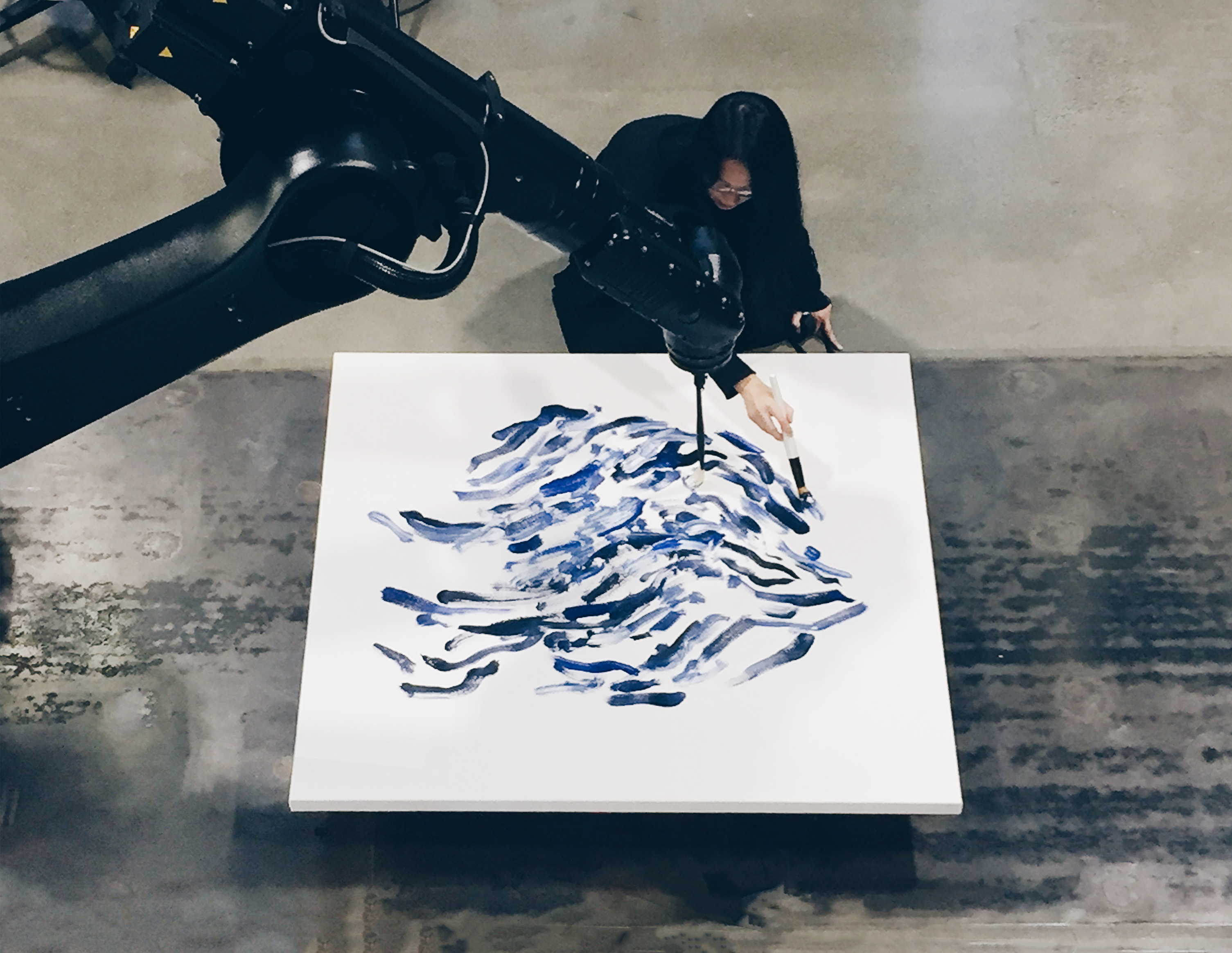Latest in: Editorial
Multidisciplinary artist Sougwen Chung delves into her unique contributions to the exhibition GEN/GEN: Generative Generations, the evolving discourse on human-machine interconnections and more with Peter Bauman (Monk Antony). link
A pioneer in the realm of human-machine collaboration, Chinese-Canadian artist and researcher Sougwen Chung has long explored the mark-made-by-hand and the mark-made-by-machine to delve into the dynamics between humans, AI systems, and robotics.
Learning how to form habitats; Studies in observation, metamorphosis and care #ROS
Assembly Lines by Sougwen Chung was exhibited at EMMA Museum in Espoo, Finland from 27 August 2022 and 15 January 2023. Read the article here.
CLOT Magazine has written a feature on Assembly Lines (D.O.U.G._5), on show at EMMA Museum in Espoo, Finland. Read the article here: Insight: Assembly Lines by Sougwen Chung, states of meditation through multi-robotic kinematics …
Inner Magazines featured Assembly Lines, which premiered at the exhibition In Search of the Present at EMMA - Espoo Museum of Modern Art in Finland. Read the article here. October 24, 2022
Thank you to Art In America magazine and Jason Bailey for featuring my drawing on their January issue, focusing on Generative Art. This represents a milestone in the industry of Art and Technology, and …
By Vanessa Chang LATE LAST YEAR, artificial intelligence made a loud splash in the art world. A trio of French students, calling themselves Obvious, put a smeared, unfinished portrait up for auction at Christie’s. Titled Portrait …
Thank you to @artnet for including me and Doug in their article on 9 Pioneering Artists working with AI. I spoke a bit with @Naomikrea about the potential I see in working with this new …
